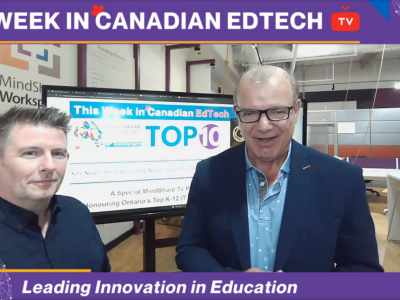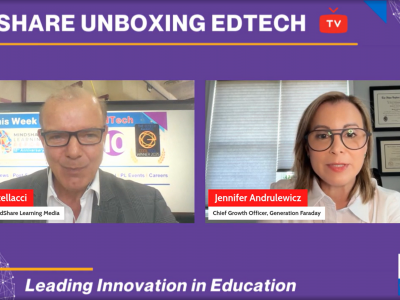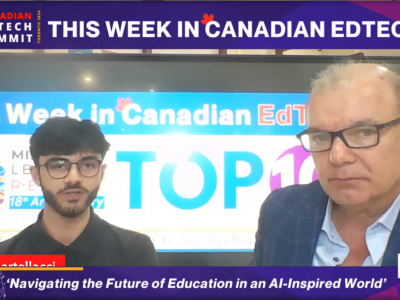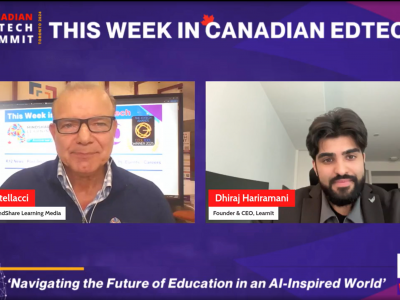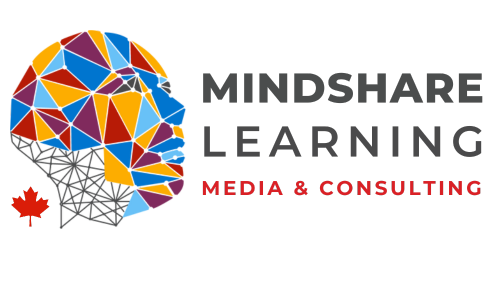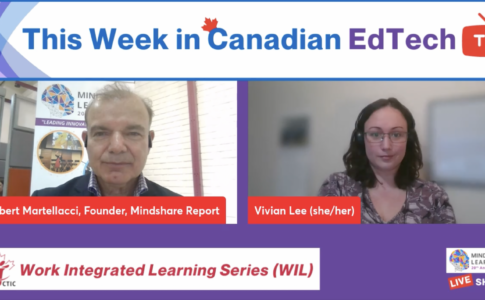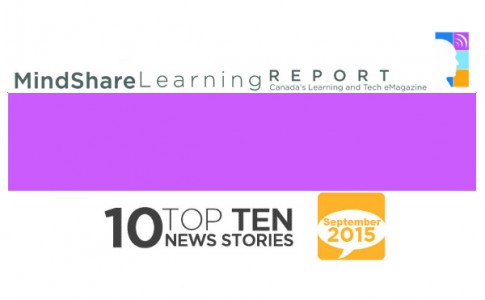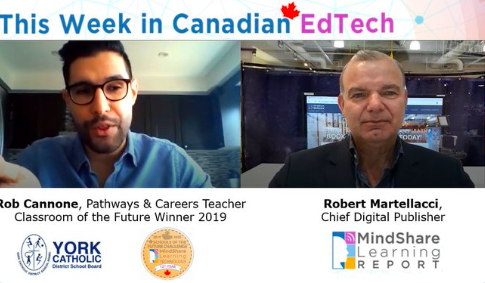This blog has been written in collaboration with Lisa Anne Floyd, PhD Student, Western University, and Dr. Karen Grose, Partner, MindShare Learning. Their first blog outlined examples, the impact and the implications of today’s emerging technologies. The second of a three-part series, this blog shares practical ways educators can introduce the application of new technologies to students in classrooms and schools.
Today’s Technologies: Supporting Student Learning
While new technologies infused in our everyday lives, and the rapid changes we are experiencing may be daunting, educators play an important role in helping students to develop an awareness and to understand the relevance, impacts and implications of technologies.
What does this look like in classrooms?
Around the world, students of all ages are engaging in activities aimed to uncover the possibilities of technology that may impact the future of work, and to develop the skills needed to succeed in an evolving global digital landscape. A recent RBC research study indicates up to fifty percent of jobs in Canada are expected to be impacted by automation. While we may not know exactly what the future workforce will look like, by focusing on global competencies, students are able to develop skills and attitudes to navigate and participate in a complex, interconnected and diverse society. Regardless of the new technology available, digital literacy, cultural competence, and sustainable development, as well as the desire to act on behalf of society’s collective well-being, are more important than ever. In today’s deep and uncharted waters, humans are – and should be – at the centre of innovation. Communication and critical thinking skills, as well as our ability to empathize and see the world from others’ perspectives are becoming even more imperative as technology evolves.
Students are also tinkering, creating and iterating with new technologies, independently and interdependently. When students explore emerging technologies in their classrooms, learning commons, makerspaces, and in afterschool clubs and activities, they are building an awareness and understanding of the capacity offered by these technologies. In fact, in many cases students know much more about the potential of new technologies than we do ourselves! This provides a fantastic opportunity for students to bring their expertise and curiosity to our classrooms and schools as co-leaders and co-learners, so the way advanced technologies work are no longer a mystery.
What are educators doing to support student learning?
We’ve listed some of the many wonderful activities, initiatives and student activities we’ve seen in schools and classrooms across Canada:
“Jobs of the Week” boards – Some teachers are sharing local and global employment bios detailing how technology is used in a variety of fields. Examples include: Horticulturist – monitors conditions in a greenhouse using sensors and programmable devices; Plumbers – install and repair hands-free faucets that use motion technology, digital leak-monitoring systems, programmable showers; Radiologist – may rely on AI to help read medical images. Check out Let’s Talk Science’s STEM career site for a wealth of examples: https://letstalkscience.ca/careers/thats-a-real-job
Inviting guest speakers from the community – Many community members are honoured to visit classrooms to discuss their job and the role technologies plays within them. We’ve noticed some educators post a request on Facebook and people from all types of careers respond indicating their willingness to come in.
Virtual Field trips – Check out Skype in the Classroom for free access to experts around the world who are willing to speak with your classroom for free!
Coding activities – Computer programming is at the heart of all emerging technologies! Many teachers integrate coding into their class activities. PD opportunities, online resources and local high school computer science students can be very helpful to support teachers and their students. TVO’s TeachOntario Coding and Computational Thinking Hub highlights many ideas and activities teachers can explore for use in their classroom.
Emerging Technologies Friday – Classes participate in discussions, debates, as well as write opinion pieces based on latest technology development announcements, news articles or emerging technology phenomenon each week. Students take turns presenting on a topic of their choice (e.g., smart farms, smart cities, AI and music production, programmable toilets, social media algorithms). Students appreciate the opportunity to choose topics, but can be guided to consider specific fields, if more relevant to the curriculum. Teachers can assess students’ oral and written communication skills. Consider using the ARII (Awareness, Relevance, Impact, Implications) acronym introduced in our first article of this series so that all important aspects of emerging technologies are incorporated.
What are districts doing to support teacher learning?
Below are some of the many wonderful districts initiatives we’ve observed to support teacher learning:
Coordinator Support – Some coordinators have emerging/new technologies in their district portfolio, and support teachers by sharing latest trends/updates and relevant articles for classroom use. Prompts and guiding questions are especially helpful for busy teachers. Monthly newsletters and online banks of resources are sometimes shared for teachers to explore.
Mission Statements – School and District-wide Mission statements are starting to incorporate goals that include awareness and understanding of emerging technologies, including coding, robotics, programmable devices, AI and big data. The ARII acronym we suggest in the first article in this series, can be used as a guide for wording as districts revise their current statements to meet the changing needs of the digital society.
Coding Professional Learning – Coding is the language of all emerging technologies and has been shown to support learning across many subject areas. School districts are offering a variety of professional learning opportunities for educators. Examples include: coding using block-based programming and intro to text-based programming, and incorporating programmable devices such as the micro:bit. Affording educators opportunities to tinker and experiment with new technologies, while considering good pedagogy, builds confidence and encourages long term sustainment of such integration. TakingITGlobal offers a Code to Learn course for teachers as part of the federal government’s CanCode Initiative.
Global Competencies Emphasis – Newsletters, professional learning and websites emphasize many ways teachers can support student learning through the context of these competencies. This three-part series on TVO’s TeachOntario Coding and Computational Thinking Hub looks at Fostering Global Competencies through coding.
What other initiatives have you seen in school districts to support educators and students to develop an awareness and understanding of the relevance, impacts and implications of emerging technologies?
Stay tuned for the final article in this series where we examine the algorithms that impact our students as they engage with social media and online games.

